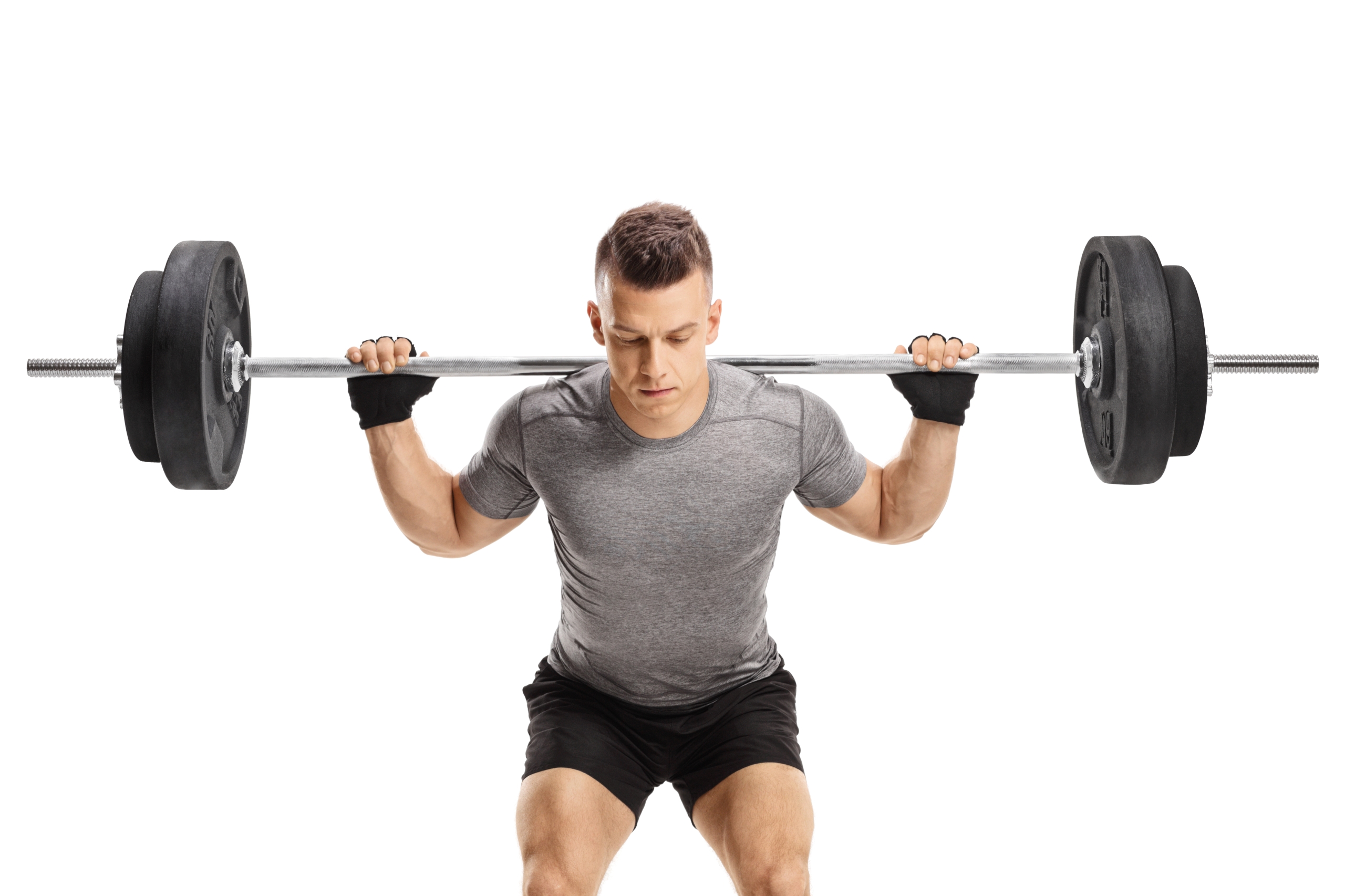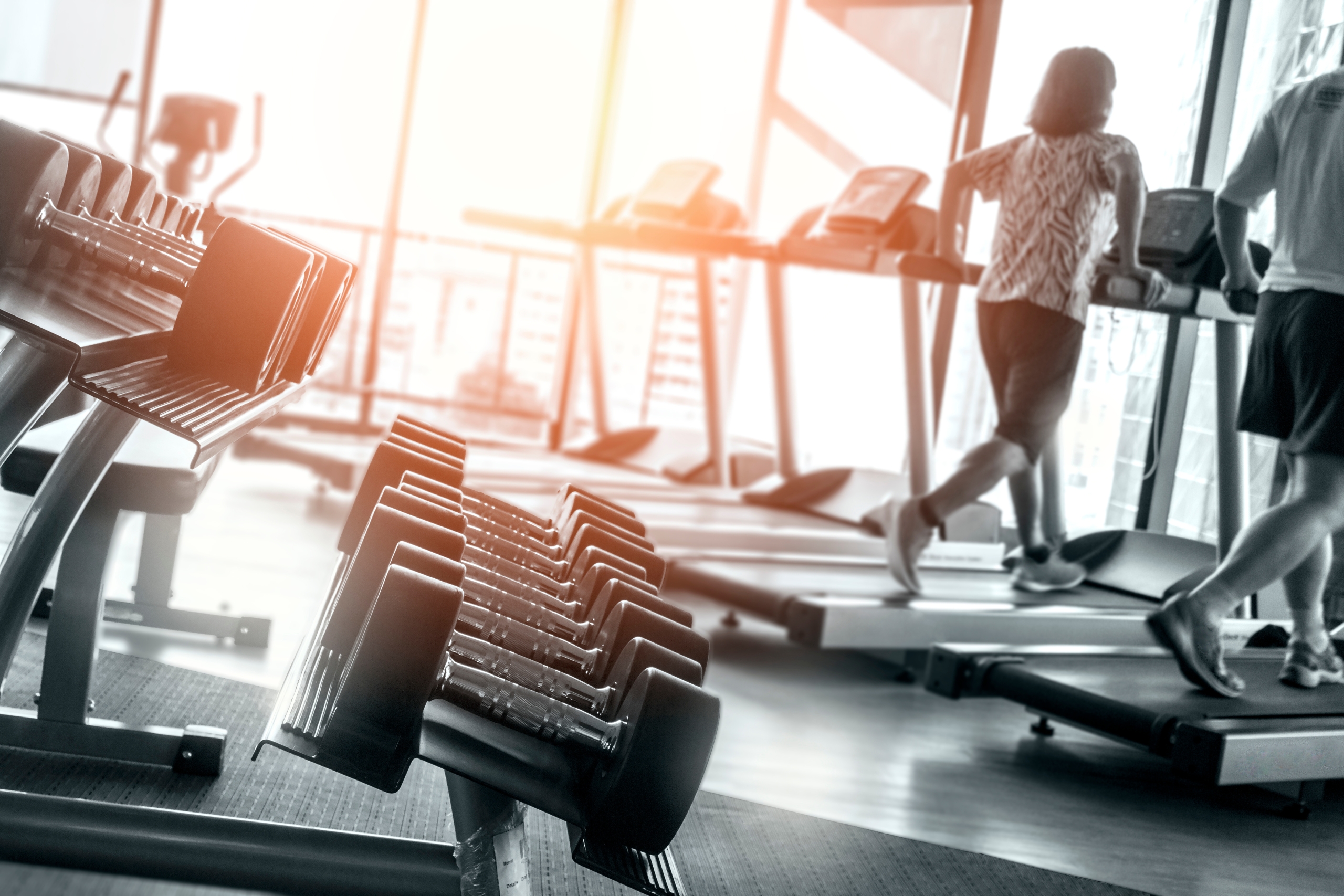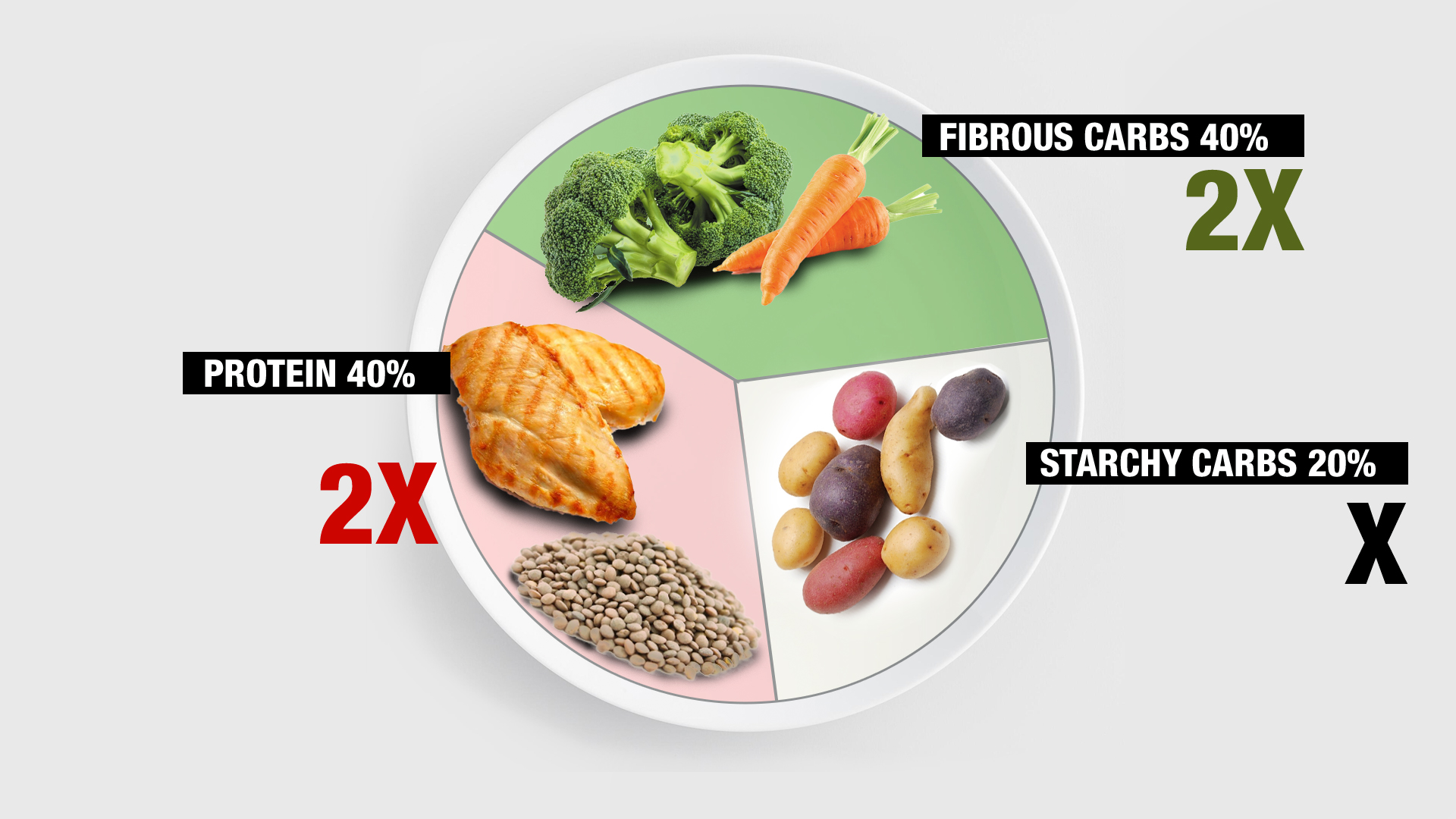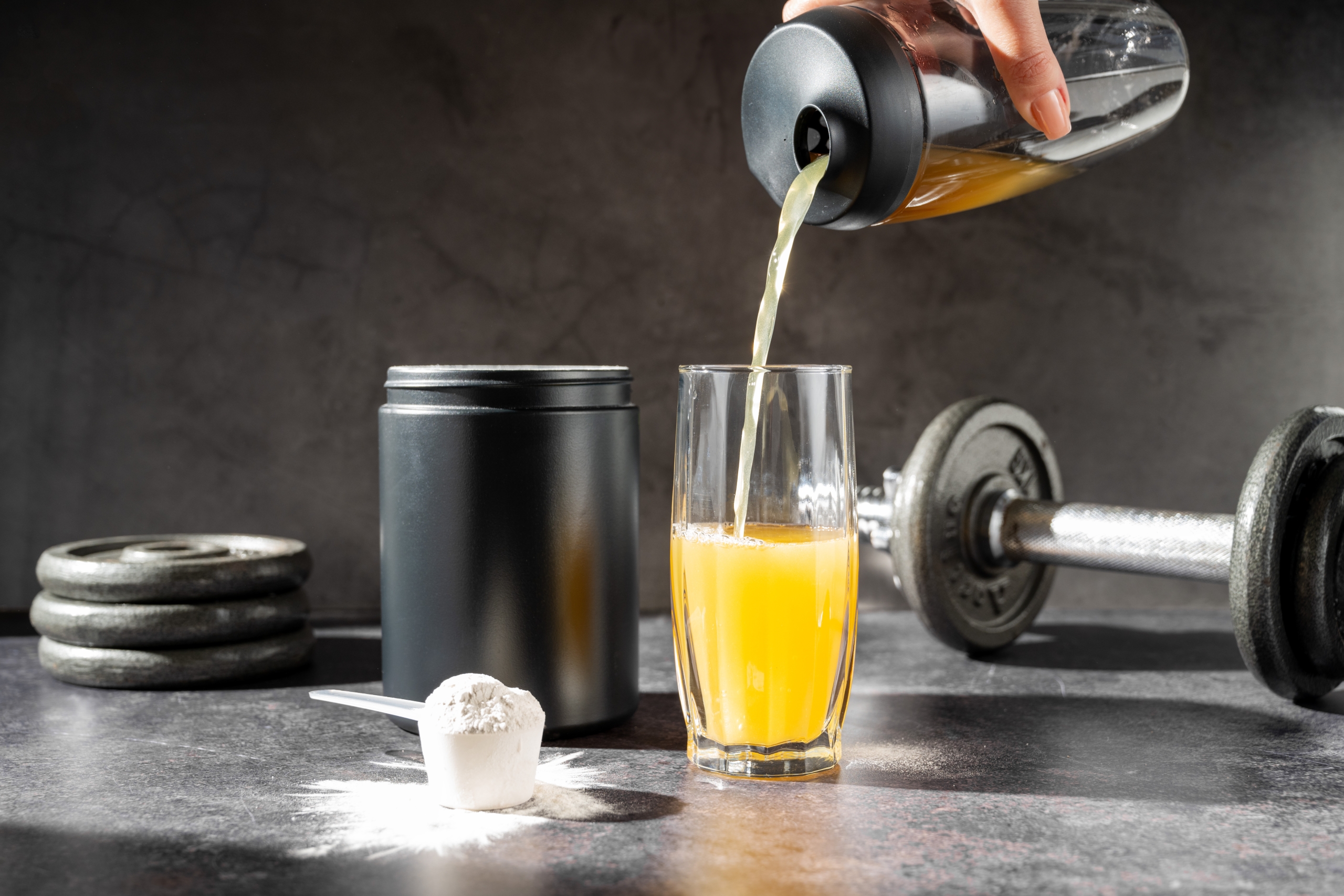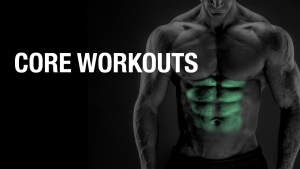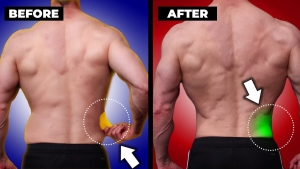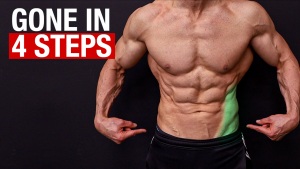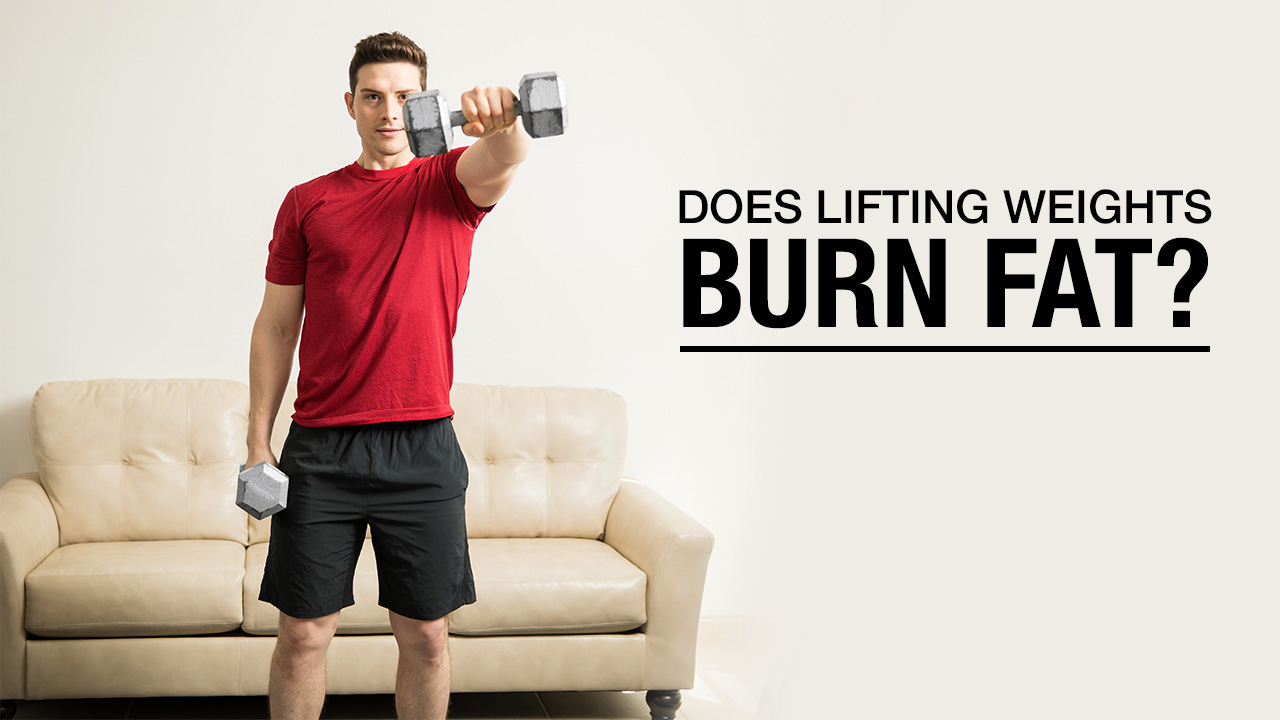
WHAT REALLY WORKS BEST FOR FAT LOSS?
Guys, you’ve been lied to about fat loss.
For years, people have been told that cardio is the king of burning fat, but here’s the truth:
Lifting weights is one of the most effective ways you can torch body fat, reshape your body, and build lean muscle.
The old mindset that only cardio workouts, like running or biking, will get you shredded needs to be thrown out the window.
I’ll say it again: cardio isn’t the ultimate fat burner—strength training is. And not just any form of exercise, but heavy resistance training. Why?
Because weightlifting doesn’t just burn calories during the workout. It continues to burn them long after you’ve left the gym.
That means your body continues to use energy, increasing your metabolism for hours after an effective strength training session.
The more muscle mass you have, the more calories you burn, even at rest. Your metabolism becomes a furnace, fueled by those intense weightlifting sessions.
We’re going to break down exactly why strength training burns fat and how it stacks up against traditional cardio training.
We’ll also look at how lifting weights transforms your body composition, increases muscle mass, and supports long-term fat loss by turning your body into a calorie-burning machine.
Get ready for a truth bomb that will change the way you think about fat burning, training, and your overall wellness journey.
THE SCIENCE OF LIFTING AND FAT LOSS
Let’s cut to the chase: lifting weights burns fat, and there’s science to back it up.
If you think burning fat is all about endless cardio workouts, you’re missing out on the real fat-burning powerhouse: resistance training. Here’s why.
EPOC: THE AFTERBURN EFFECT
When you engage in a vigorous weightlifting session, your body doesn’t stop burning calories when you drop the dumbbells.
Thanks to Excess Post-Exercise Oxygen Consumption (EPOC), or what we call the afterburn effect, your metabolic rate stays elevated for hours, sometimes up to 48 hours.
This means you’re burning calories at rest long after your workout is over.
The more intense the session (e.g., heavy weight, multi-joint exercises), the more oxygen your body needs to recover, and that translates into burning more body fat.
MUSCLE MASS AND METABOLISM
More muscle mass doesn’t just make you look stronger; it cranks up your basal metabolic rate (BMR).
For every pound of muscle tissue you gain, your body burns more calories even while you’re sitting on the couch.
Muscles during strength training become active tissue that requires energy, and guess what?
That energy comes from the calories and fat cells your body has stored.
So, every rep you grind out, every heavy weight training session you complete, you’re fueling a fat-burning machine that works 24/7.
The result? A faster metabolism and greater fat loss.
THE FAT-BURNING HORMONE COCKTAIL
Here’s where weightlifting really shines: it sends your hormones into overdrive.
Resistance training floods the body with a cascade of hormones like testosterone, growth hormone, and insulin, all of which are essential for fat burning and muscle building.
These hormonal benefits of weightlifting don’t just help you torch fat, they also support muscle gain and improve body composition.
When you lift, you’re not just working your muscles; you’re transforming your cells, building lean muscle, and optimizing your body’s ability to burn fat more efficiently.
In short, lifting weights isn’t just about looking good. It’s about reshaping your entire wellness journey.
CAN YOU BUILD MUSCLE AND BURN FAT AT THE SAME TIME?
If you’ve ever been told you can’t build muscle and burn fat at the same time, you’ve been misinformed.
The old-school thinking that you need to bulk to build muscle and cut to burn fat is outdated.
You can achieve both goals with the right exercise program, nutritional approach, and training intensity.
Let’s break down exactly how to do it, so you can maximize your results without falling into the endless cycle of bulking and cutting.
CALORIES IN VS. CALORIES OUT
The key to burning fat is simple: calories in vs. calories out.
You need to consume fewer calories than you burn.
But here’s the twist: you don’t need to be in a massive calorie deficit to see results.
To burn fat, a calorie deficit is necessary, but going too extreme can sabotage your progress.
If you drop your intake too drastically, you risk losing muscle mass along with fat, and you’ll see a decline of metabolism over time, making it harder to achieve your goals.
The sweet spot?
A 10-15% calorie reduction from your maintenance level.
For example, if your basal metabolic rate (BMR) is 3,000 calories a day, aim for a reduction of 300-450 calories.
This range allows you to lose fat at a steady pace without compromising your muscle tissue.
The goal of strength training while in a deficit is to maintain and build lean muscle while burning fat.
This is where many people make mistakes—they think they need to starve themselves, but that only results in muscle loss, not fat burning.
By maintaining a moderate calorie reduction, you give your body the energy it needs to power through your light weightlifting workout while still encouraging fat loss.
FAT AS FUEL FOR MUSCLE BUILDING
Your body can tap into fuel from energy sources like fat for muscle building. This means you don’t need to be in a calorie surplus to add muscle while losing fat.
When you engage in heavy lifting or a vigorous weightlifting session, your body uses stored fat tissue for cellular energy to help repair and grow muscles after intense workouts.
The beauty of this process is that your body composition shifts—adipose tissue is burned as fuel, while muscle mass increases.
This is known as body recomposition and is the ultimate goal for those who want to achieve a lean, strong physique without the need for traditional bulking and cutting cycles.
You can thank your body’s ability to adapt to excess post-exercise oxygen consumption (EPOC) for making this possible.
Your metabolism stays elevated long after your workout, which accelerates fat burning and muscle repair.
PROTEIN INTAKE: DON’T OVERCOMPLICATE IT
Protein is the building block of muscle tissue, and it’s crucial when you’re building muscle and burning fat at the same time.
Some people advise you to consume one gram (or more) of protein per pound of body weight, but here’s the truth: you may not need that much.
Studies show that 0.8 grams of protein per pound of body weight is enough to support muscle growth and fat loss, especially when you’re in a calorie deficit.
Let’s say you’re a 185-pound person, that means you only need around 148 grams of protein per day.
To make this easier, you can use an online calorie calculator.
Focus on hitting your daily protein target, and don’t stress about going overboard. The goal is to maintain or increase muscle mass while burning fat and hitting that 0.8 grams per pound will do the job just fine for most people.
NUTRIENT QUALITY OVER QUANTITY
While calories are important, the quality of those calories matters even more.
You can’t just hit your calorie and protein goals with junk food and expect results.
Your body needs high-quality nutritious foods to support both fat loss and muscle growth.
Focus on nutrient-dense foods like lean meats, fish, eggs, vegetables, and whole grains.
These provide the essential vitamins, minerals, and macronutrients your body needs to perform at its best.
Why is this so important?
Because nutrient-dense foods are more filling and provide more energy per calorie, which is going to be helpful for exercise that’s energy expensive.
This means you can eat more while staying within your calorie deficit.
Plus, these foods help with recovery, reduce inflammation, and support muscle building.
The better the quality of your food, the more effective your strength training workouts will be, and the faster you’ll see progress.
SUPPLEMENTS: THE RIGHT ONES FOR THE JOB
You don’t need a cabinet full of supplements to build muscle and burn fat, but the right ones can give you an edge.
Let’s start with the basics:
Protein Powder: This helps you hit your daily protein goals without needing to eat excessive amounts of food post-training. It’s a convenient and effective way to ensure you’re getting enough protein for muscle recovery and growth.
Creatine: This supplement is a must for anyone serious about weightlifting. Creatine helps increase strength, improve performance during intense exercise, and support muscle recovery, even in a calorie deficit.
Omega-3s: These healthy fats improve insulin sensitivity, reduce inflammation, and enhance fat burning. Omega-3s also support heart health, making them an essential part of any wellness journey.
Caffeine: This common ingredient in fat burners can help boost your metabolic rate, improve focus during workouts, and increase calorie burn. Just be mindful of your intake to avoid any negative effects on your blood pressure, heart rate, or sleep.
By focusing on these key supplements, you’ll have the tools you need to support your muscle building efforts while simultaneously burning fat.
DON’T FALL FOR THE BULKING-CUTTING CYCLE
You don’t need to bulk and cut to achieve the physique you want.
With a controlled calorie deficit, smart resistance training, and a focus on nutrient-dense foods, you can build muscle and burn fat at the same time.
Throw in the right supplements and you’ll be well on your way to transforming your body composition faster than you ever thought possible.
So, forget the old-school mentality.
Weightlifting for weight loss is not just possible, it’s one of the best ways to torch fat and build muscle at the same time.
Strength training builds lean tissue, boosts your metabolism, and keeps your calorie burn counts high long after you stop doing your gym-based exercise.
The result?
A lean, muscular physique without the need for extreme bulking and cutting cycles. Get lifting and start transforming your body today!
WHY LIFTING WEIGHTS BEATS CARDIO FOR FAT LOSS
You’ve been told for years that cardio workouts are the best way to burn fat, right?
Well, it’s time to flip that thinking.
While cardiovascular exercise, or conditioning, has its place in an exercise regimen, when it comes to fat loss, lifting weights is where the results happen.
Let’s break down why strength training is more than just about burning calories during your exercise session, and why it’s far superior to cardio for reshaping your body and preserving lean muscle tissue.
MORE THAN JUST CALORIES BURNED
When you think about fat loss, most people focus on calories burned during the workout.
But what if I told you strength training does way more than just torch calories during the session?
It’s all about what happens after you put the weights down.
Lifting weights increases your metabolism long after you’re done, thanks to Excess Post-Exercise Oxygen Consumption (EPOC).
Your body is working overtime to repair the muscle tissue, and that requires energy, meaning more calories burned for hours after training.
Compare that to steady state cardio, where once the workout ends, so does the majority of your calorie burn.
But there’s more to it.
Strength training reshapes your body by increasing muscle tone and improving your body composition.
Cardio workouts, on the other hand, can cause muscle loss if overdone, leaving you “skinny fat” with little muscle health to show for all those hours on the treadmill.
WHY YOU NEED TO HOLD ONTO THAT LEAN MUSCLE
When you’re working on fat loss, it’s not just about losing weight, it’s about losing fat while holding onto that hard-earned muscle.
And here’s where cardio instead of weight training falls short.
Cardiovascular training, especially in excess, can break down muscle tissue, making it harder to maintain your muscle mass.
This is why people who rely solely on cardio for fat loss often end up looking smaller but not necessarily leaner.
They lose muscle tone and sacrifice their muscle health in the process.
On the flip side, weight training actively works to preserve muscle and can even build lean muscle during a consumed calorie deficit by taking energy from your body fat stores.
By incorporating a full-body resistance training routine, you’re keeping the muscle through weight training while burning off the fat, which is the ultimate goal of body recomposition.
This is the key to a defined, athletic physique—not just a lower number on the scale.
BODY RECOMPOSITION: BUILD MUSCLE WHILE LOSING FAT
Here’s what sets weight training apart from cardio activities: body recomposition.
With strength training workouts, you’re not just losing fat; you’re also building or maintaining muscle at the same time.
That’s the magic formula for transforming your body.
When you lift weights, especially with a mix of heavy resistance training and high-rep, short-rest exercises, you’re working your muscles in a way that promotes muscle building while burning calories.
This combination of strength training and fat loss helps to preserve your muscle tone, while cardio alone will have you losing muscle mass along with fat, leaving you looking flat.
Think of it like this:
With weightlifting, you’re turning your body into a calorie-burning, muscle-building machine.
You maintain lean tissue, keep your metabolism humming, and get the benefits of resistance training long after you’ve left the gym.
Cardio workouts don’t give you those same benefits. In fact, you might see how it negatively effects strength training.
Sure, you might burn some calories while improving your muscle endurance during the session, but once it’s over, so are the results.
COMBINATION OF STRENGTH TRAINING WITH CARDIO
This doesn’t mean you should skip cardio altogether. Cardiovascular training benefits heart health, improving endurance, and boosting mental health.
But if your goal is everyday training for weight loss, focus on weight training as your primary method.
You can still incorporate moderate-intensity cardio exercise or intensity interval training to complement your strength workouts.
Just make sure that doing cardio before weight training doesn’t drain your energy for the heavy lifting that truly transforms your body.
If you want to burn fat, preserve muscle, and change your body composition, lifting weights needs to be at the core of your hypertrophy training program.
Weight training isn’t just about lifting heavy; it’s about shaping your entire physique and burning fat long after your workout session ends.
Get off the treadmill, pick up those weights, and start seeing the real benefits of strength training.
THE RIGHT WAY TO LIFT WEIGHTS FOR FAT LOSS
If you want to burn fat and build muscle, lifting weights the right way is non-negotiable.
You can’t just throw in random exercises and expect results.
You need to focus on the most effective exercise methods and structure your workouts with precision.
Let’s talk about how to lift smart, maximize your fat-burning potential, and avoid the misunderstandings about strength training that hold most people back.
COMPOUND MOVEMENTS
When it comes to burning fat and reshaping your body, compound movements are your secret weapon.
Forget about endless hours of aerobic activity, it’s the multi-joint exercises like Squats, Deadlifts, and Bench Presses that pack the real punch.
These exercises recruit multiple muscle groups, which means more muscle fibers are engaged, and you’re burning more calories per minute of weight training.
Think about it:
A movement like a squat doesn’t just work your legs. It engages your core, stabilizers, and even your upper body.
The more muscles you activate, the more energy expenditure you create.
That’s how you torch calories and build muscle at the same time.
It’s not just about hitting the gym and lifting any weight. It’s about choosing the right types of exercise that maximize your results.
Body weight exercises are great too, but when you combine them with heavy lifts like deadlifts and presses, that’s where the magic happens.
STRENGTH TRAINING FREQUENCY
Here’s one of the biggest misunderstandings about strength training: some people think lifting once or twice a week will get them shredded.
Not true.
If you’re serious about training for fat loss, you need to hit the weights at least three to four times per week.
This frequency keeps your metabolism elevated, triggers continuous muscle growth, and ensures you’re burning calories even on your rest days.
The effects of weight training don’t end when you leave the gym. Your body is still working to recover, repair, and grow for hours after training.
A day without training doesn’t mean a day without burning calories if you’ve trained the right way the day before.
Exercise should be strategically planned with a mix of compound movements and accessory lifts to ensure you’re hitting every muscle group.
Keep in mind, the goal isn’t just to lift weights but to create a consistent exercise routine that delivers results week after week.
INTENSITY OVER VOLUME
You don’t need to spend hours in the gym. In fact, short, intense exercise sessions are far more effective than marathon workouts.
The key is exercise intensity, not the duration of exercise and the minutes of weight training.
Focus on high-rep, short-rest training methods like circuit training or anaerobic exercise for maximum fat burning.
These types of training spike your heart rate, increase your breathing rates, and push your muscle endurance to the limit—all while keeping your energy expenditure high.
Circuit training is especially effective for fat loss because it keeps you moving from one exercise to the next without long breaks, maintaining the intensity of the workout.
Plus, the more intense the workout is, the more calories through weightlifting workouts you’ll burn both during and after the session, thanks to Excess Post-Exercise Oxygen Consumption (EPOC).
PROGRESSIVE OVERLOAD
If you want to build muscle and burn fat, progressive overload is non-negotiable.
This means you need to consistently increase the weight, reps, or intensity of your workouts over time.
If you’re lifting the same weights for the same reps every week, you’re not going to see the results you want.
Your body adapts to the exact activities you put it through, so you need to keep challenging it.
Whether you’re doing Squats, Presses, or Rows, the key is to push yourself just a bit further every session.
Adding weight, increasing reps, or even shortening rest periods are all forms of progressive overload.
When you do this, your body is forced to grow stronger, build more muscle, and burn more fat.
Remember, your body burns calories to fuel muscle contraction, so the more you push it, the more energy to contract those muscles is required.
The benefits of weight training go beyond the gym—bone-building cells are activated, metabolism ramps up, and your overall body composition improves.
And that’s exactly what you want when your goal is fat loss.
CARDIO: DOES IT STILL HAVE A ROLE?
You’ve heard it before: cardio burns fat. But when you’re focused on building muscle and burning fat, you need to know how to use cardio without sabotaging your progress.
There’s a place for it, but let’s be clear, cardio isn’t the fat-burning king.
Weight training still reigns supreme for transforming your body. So where does cardio fit into your routine?
LOW VS. HIGH INTENSITY
I always talk the need to swap out steady state cardio for burst training, but there’s those that will kind of argue the fact and say,
“Yeah, but steady state cardio like treadmill walking is going to burn a higher percentage of calories from fat.”
And that’s true.
As a matter of fact, it’s going to burn 50% of its calories from fat when you’re working out at lower intensity levels as opposed to 35% of the calories from fat when you’re working out at a higher intensity.
But here’s where it gets interesting.
If you were to do a 40-minute treadmill walk, you’re going to burn 250 calories. If you figure out 50% of those calories being burned as fat, you’re basically going to come out to 125 fat calories burned.
But you want to look at the total number of calories burned.
When you work out at a higher intensity level, it’s rough. It’s not easy to do sprint work or burst training.
It makes you feel like you’re out of breath, and it’s a lot more difficult. Much more difficult than being able to walk for 40 minutes.
So, with that, we know that we’re burning a lot more calories. We’re burning 380 calories.
Even with the 35% rate of fat burning from HIIT, which is a lower rate than steady state cardio, you’re still going to burn more overall fat calories because the total number of calories burned is higher.
You would burn 133 calories from fat with high-intensity cardio in 20 minutes compared to 125 calories from fat in 40 minutes with low-intensity cardio.
And think about this: You were doing 40 minutes of work with steady state cardio, and now you’re doing 20 minutes of burst training.
So, I can get you out of the gym in half the time and get you better fat-burning results.
Most importantly, you’re able to preserve and build muscle.
Look at any marathon runner and you will see the guys that rely on longer training, longer conditioning work, and steady state conditioning, don’t look the way that I think that you’re trying to look.
They’re usually a lot thinner than you might be aiming for. They don’t have the muscle mass that you want.
So, what am I saying here?
I’m saying that you want to make sure that you’re keeping your workouts at that higher intensity so that you’re burning fat but at the same time you’re not costing yourself your chances of having muscle.
Guys, remember, every pound of lean muscle that you build is going to allow you to have and burn an extra 50 calories every single day, just at rest.
It’s about balancing the two: strength for muscle, HIIT for fat loss. And trust me, your body will thank you for the efficient fat-burning and muscle preservation.
THE ROLE OF NUTRITION IN LIFTING FOR FAT LOSS
You’ve probably heard it before: abs are made in the kitchen.
When it comes to burning fat and building muscle, your nutrition is just as important as what you do in the gym.
You can have the best strength training workout, but without the right fuel, you’re not going to see the results you’re after.
Let’s dive into the key nutrition strategies you need to prioritize for fat loss and muscle retention.
PRIORITIZE PROTEIN
If you’re not hitting your daily protein target, you’re leaving gains on the table—and sabotaging your fat loss.
Protein is the most important macronutrient for maintaining and building muscle, especially when you’re in a calorie deficit.
Why?
Because when you’re cutting calories, your body needs amino acids to repair and grow muscle tissue.
If it doesn’t get them from your diet, it’ll break down your existing muscle for fuel—and that’s the last thing you want.
The ideal target?
Aim for 0.8 grams to 1 gram of protein per pound of body weight.
So, if you’re a 150-lb. person, you should be eating at least 120-150 grams of protein per day.
It’s not just about quantity though—it’s also about timing.
Getting consistent protein intake throughout the day helps ensure you have a steady stream of amino acids for muscle repair, whether you’re recovering from a heavy period of resistance exercise or just going about your day.
CARB TIMING
Carbs are not the enemy, but when you eat them makes all the difference.
For optimal performance in your weight training sessions, you want to fuel up with carbs before and after your workout.
Eating carbs before your physical activity can provide the energy you need to power through intense weightlifting and hit those compound lifts like Squats and Deadlifts.
After your workout, carbs help replenish your glycogen stores and kickstart the recovery process.
What about the rest of the day?
Keep your carb intake moderate, especially if you’re looking to burn fat. Focus on consuming most of your carbs around your workouts when your body is primed to use them for fuel rather than storing them as fat.
This strategy helps you maintain energy during your workouts without overloading on carbs that could slow down your fat loss.
FAT INTAKE
Alright, let’s talk fats. When it comes to fat intake, it’s all about balance.
You need dietary fat for hormonal health. For example, supporting testosterone and other key hormones that play a role in muscle building.
But fat is calorie-dense, meaning it’s easy to overeat if you’re not careful.
You might have heard the classic advice to cut fats, but that’s not exactly the full story, especially if you’re serious about performance, strength, and body composition.
The truth? You don’t need to avoid fats entirely, but you do need to keep them in check. Here’s why:
Fats are calorie-dense, meaning they pack over twice the calories per gram compared to proteins or carbs.
That can make it easy to blow past your daily calorie target without even realizing it.
So, how do you balance it? Use fats strategically.
Add a small amount when you’re cooking, like a tablespoon of olive oil in the pan.
Or try sprinkling some seeds or nuts on top of a salad for that added crunch and healthy fat boost. In short, just keep it controlled.
Remember, a little goes a long way with fats, especially when your goals involve staying lean, powerful, and explosive in the gym.
MEAL TIMING
Let’s clear this up: meal timing isn’t as important as the total calories and macronutrients you consume in a day.
That being said, if you’re looking to maximize your performance and recovery, spacing out your meals to include protein and carbs around your workouts can make a difference.
The American Council of Exercise suggests focusing on consistent, balanced meals throughout the day, which helps maintain energy levels and supports muscle recovery.
Whether you’re doing floor exercises, bodyweight exercises, or hitting a heavy mix of weight training, the most important thing is that your meals are fueling your activity and helping you hit your nutrition goals.
BEST SUPPLEMENTS FOR FAT LOSS WHILE LIFTING
When it comes to burning fat while building muscle, your nutrition is key, but the right supplements can give you that extra edge.
Let’s break down the best supplements to support your strength training routine and maximize your fat loss results.
PROTEIN POWDER
Hitting your daily protein goals is crucial for muscle building and fat loss.
But eating enough lean meat, eggs, or fish to hit your target can feel like a full-time job.
That’s where protein powder comes in—it’s an easy way to ensure you get the protein you need without overloading on food.
Whether you’re a 125-pound person or a 155-pound person, adding a scoop of protein powder post-workout helps repair muscle, maintain lean mass, and curb hunger.
Remember, more muscle means more fat burning, even at rest. This is why protein is your best friend in your fat loss journey.
The most effective way to incorporate it?
Mix a shake post-training to replenish your muscles and kickstart recovery.
If you’re following a nine-month exercise routine, hitting your protein goals consistently will make a big difference in preserving muscle while burning fat.
CREATINE
Creatine helps your muscles retain water, providing them with the energy they need for short bursts of intense effort—like pushing out those last few reps on heavy squats or deadlifts.
The effects of exercise can be amplified with creatine, even when you’re in a calorie deficit.
It boosts your strength, increases muscle endurance, and helps you maintain the muscle mass you’ve worked so hard to build.
Plus, creatine enhances recovery, so you’re ready for your next workout.
Whether you’re an average person or a seasoned lifter, creatine belongs in your arsenal if you’re serious about getting lean while preserving muscle.
OMEGA-3S
If you’re not taking omega-3s, you’re missing out on one of the best muscle-preserving supplements out there.
Omega-3 fatty acids, found in fish oil or algae supplements, have been shown to reduce inflammation, which is crucial when you’re in a calorie deficit and pushing your body with intense workouts.
They also improve insulin sensitivity, meaning your body is more efficient at using carbs for energy rather than storing them as fat.
Omega-3s support cardiovascular health and offer major health benefits for your joints, especially important when you’re grinding through heavy weightlifting sessions.
Omega-3s help keep your body primed for muscle endurance and recovery, making it easier to hit your fat loss goals while maintaining muscle.
NATURAL FAT BURNERS
Forget the overhyped supplements and the flashy labels. There are simple, natural ingredients that can actually support your fat-loss goals without the jitters and side effects.
Take green tea extract, for example.
It’s loaded with antioxidants, particularly EGCG, which can boost your metabolism and help your body tap into fat stores during exercise.
Then there’s capsaicin. This is the active component in chili peppers, which raises your body temperature slightly, leading to a minor calorie burn boost and potentially curbing your appetite in the process.
These natural fat burners can support your fat-loss journey, but they’re no substitute for the basics.
Hard work in the gym and solid nutrition are still the foundation. Use these natural boosters as an extra edge, not as a replacement.
If you’ve been thinking cardio exercise is the only way to burn fat, think again.
Strength training not only burns calories during the workout, but it also keeps the fat-burning fire going long after.
And with the right combination of training, nutrition, and caloric intake, you’ll see your body composition change faster than any aerobic exercise could deliver.
Check out our complete line of ATHLEAN-RX Supplements and find the best training program for you based on your fitness level and goals.

- When you lift weights, your body keeps burning calories long after you’ve left the gym—way longer than any cardio session can offer.
- The more muscle you build, the higher your metabolism. Muscle torches calories 24/7, even when you’re just sitting on the couch.
- Unlike cardio, strength training helps you keep muscle while you burn fat. That’s how you get lean, not skinny.
- Compound lifts like Squats, Deadlifts, and Presses engage tons of muscle groups, meaning more fat gets burned every time you step under the bar.
- Lifting weights improves how your body handles carbs—turning them into energy instead of fat. Win-win.
- A short, intense weightlifting session burns just as many calories as long cardio sessions, but with the added bonus of building muscle.
- Weight training isn’t just about losing fat—it’s about transforming your body. Build muscle, burn fat, and get that athletic, shredded look.
DOES LIFTING WEIGHTS BURN FAT FAQS
Absolutely! If anyone tells you that lifting weights isn’t effective for fat loss, they’re flat-out wrong.
Here’s the deal: strength training is one of the most effective ways people lose fat while maintaining, or even building, muscle.
Forget the outdated idea that only cardio burns fat! Weightlifting not only burns calories during your workout but also ramps up your metabolism long after you’ve left the gym.
Lifting weights creates a serious equation for energy expenditure because it requires your body to use more energy (aka calories) to repair muscle tissue after your workout.
This is called the afterburn effect, and it’s why strength training is a key activity for fat loss.
Compare that to cardio, where the calorie burn stops when the workout ends.
The bonus? The more muscle you build, the more calories you burn even at rest.
Want to lose fat and keep it off? You need to form habits around strength training.
Incorporate compound lifts like Squats, Deadlifts, and Presses, and make it a regular part of your routine.
Even 5 low-impact exercises that engage multiple muscle groups can keep your body burning fat long after your session.
Plus, lifting weights strengthens your body, improves your muscular endurance, and helps prevent injuries in the long run.
So yes, you can absolutely lose fat by lifting weights!
Yes, you can lose belly fat by lifting weights, but here’s the catch: you can’t spot-reduce fat.
This is a common approach people often get wrong. They think doing endless crunches will burn belly fat specifically.
That’s not how your body works. When you lose fat, it comes off everywhere, not just one area.
The key to losing belly fat is incorporating the right activity type, and strength training is one of the best ways to do it.
When you lift weights, especially focusing on compound movements like Squats, Deadlifts, and Presses, you're engaging multiple muscle groups and boosting your metabolism.
This burns calories during and after your workout, leading to overall fat loss, including the belly area.
Plus, strength training builds muscle, and more muscle means a higher calorie burn, even at rest.
If you combine this with proper nutrition, you’ll notice that belly fat start to disappear over time.
And don’t forget, improving your muscular endurance by incorporating a different aspect of strength training helps you stay consistent, which is crucial for long-term fat loss.
Here’s the truth bomb: weights win when it comes to fat loss, hands down.
Now, before all the cardio lovers get upset, let me explain why.
Cardio is good for burning calories during your workout, but once the session ends, so does the fat-burning.
With strength training, not only do you burn calories during your workout, but you continue to burn them long after, thanks to the afterburn effect, or Excess Post-Exercise Oxygen Consumption (EPOC).
Here’s the real kicker:
When you lift weights, you’re building muscle. And the more muscle you have, the higher your metabolism, meaning you burn more fat even when you're just chilling.
That’s an advantage cardio can’t offer.
Plus, if your goal is to get lean and defined, strength training helps you achieve that toned look by preserving and building muscle as you lose fat.
A common approach people take is thinking they need to run endless miles to lose fat, but that’s only part of the equation.
The most effective way to lose fat is to combine strength training with some conditioning work, not rely solely on one or the other.
Want to maximize your fat loss?
Lift weights, build muscle, and throw in some conditioning work for heart health and endurance—but always prioritize the aspect of strength training to keep that fat burning around the clock.
REFERENCES

Jeff Cavaliere M.S.P.T, CSCS
Jeff Cavaliere is a Physical Therapist, Strength Coach and creator of the ATHLEAN-X Training Programs and ATHLEAN-Rx Supplements. He has a Masters in Physical Therapy (MSPT) and has worked as Head Physical Therapist for the New York Mets, as well as training many elite professional athletes in Major League Baseball, NFL, MMA and professional wrestling. His programs produce “next level” achievements in muscle size, strength and performance for professional athletes and anyone looking to build a muscular athletic physique.
















